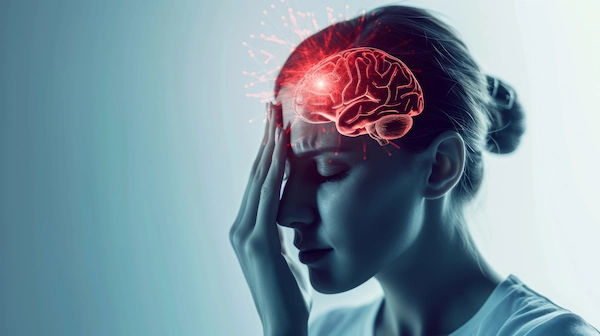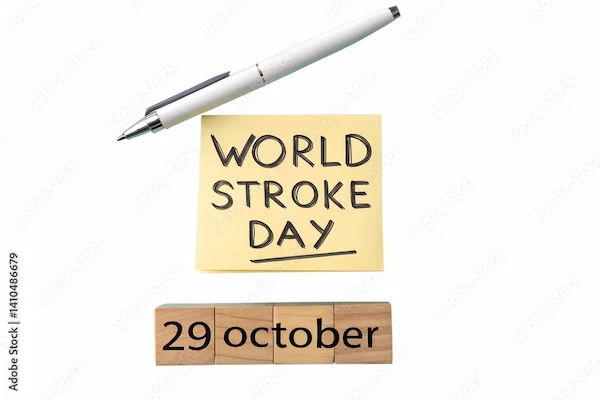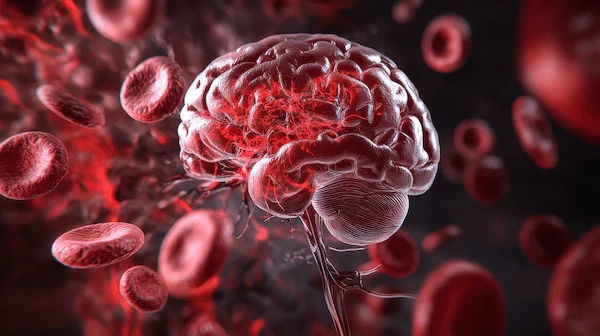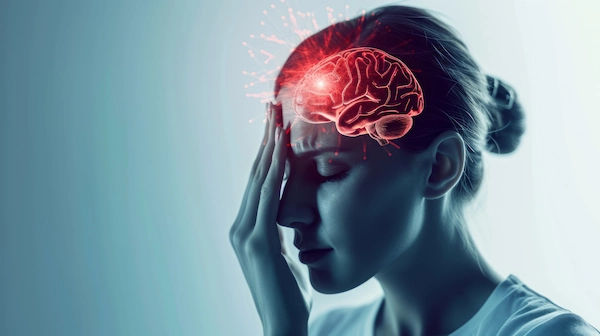Stroke Emergency Guide What NOT To Do When Someone Is Having A Stroke
A lifesaving guide on stroke emergencies: learn the critical mistakes to avoid, recognise F.A.S.T. signs, and act quickly to protect brain health.

Written by Dr. Md Yusuf Shareef
Reviewed by Dr. D Bhanu Prakash MBBS, AFIH, Advanced certificate in critical care medicine, Fellowship in critical care medicine
Last updated on 8th Oct, 2025
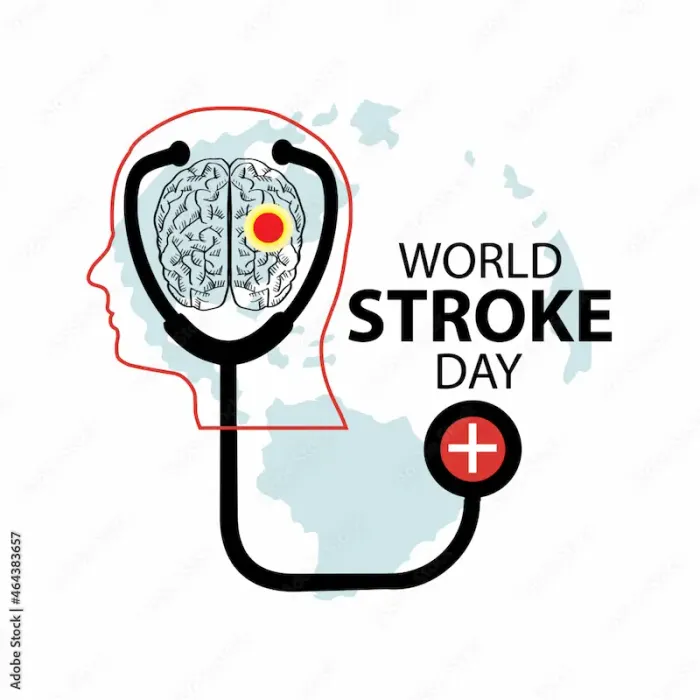
Introduction: Why Every Second Counts in a Stroke
A stroke is a medical crisis where a blood clot or burst vessel interrupts blood flow to the brain, causing brain cells to die at an alarming rate—nearly 2 million neurons per minute. In this terrifying scenario, the actions of bystanders in the first few minutes are as critical as the doctors' work later. Knowing what to do is vital, but equally important is knowing what to avoid when someone is having a stroke. A single misstep, however well-intentioned, can drastically worsen the outcome, leading to severe disability or even death. This guide goes beyond the basic advice to provide a clear, actionable plan. We will walk you through the critical mistakes you must avoid, explain the life-saving reasons behind each "don't," and outline the exact steps to take to maximise the person's chance of a full recovery. Your knowledge and calmness can make all the difference for someone experiencing a stroke.
The Golden Rule: Act F.A.S.T., Don't Wait
Time is brain tissue. This is the fundamental principle of stroke care. The sooner treatment begins, the more brain function can be preserved. The easiest way to remember the key signs is the F.A.S.T. acronym.
How to Perform the F.A.S.T. Test
Use the F.A.S.T. method to quickly recognise the warning signs of a stroke:
• F - Face Drooping: Ask the person to smile. Does one side of the face droop or feel numb? Is their smile uneven?
• A - Arm Weakness: Ask them to raise both arms. Does one arm drift downward? Are they unable to lift one arm at all?
• S - Speech Difficulty: Ask them to repeat a simple sentence, like "The sky is blue." Is their speech slurred, strange, or difficult to understand?
• T - Time to Call Emergency Services: If you observe any of these signs, even if they seem to come and go, call for an ambulance immediately. Note the time when symptoms first appeared.
Beyond F.A.S.T.: Other Crucial Stroke Signs
A stroke can also present with:
• Sudden numbness or weakness in the leg.
• Sudden confusion, trouble understanding others.
• Sudden vision problems in one or both eyes.
• Sudden severe headache with no known cause.
• Sudden trouble walking, dizziness, loss of balance, or coordination.
Consult a Neurologist for the best advice
Critical Mistakes to Avoid During a Stroke Emergency
When panic sets in, it's easy to act on instinct. But some instinctive reactions are dangerous. Here are the critical things you must avoid.
1. Do NOT Give Them Food or Drink
This is one of the most common and dangerous mistakes. A stroke can impair the swallowing reflex and muscle control. If the person cannot swallow properly, food or liquid can enter the windpipe and lungs, causing aspiration pneumonia—a serious complication that can be fatal.
The Danger of Aspiration Pneumonia
Aspiration pneumonia introduces bacteria into the lungs and can lead to severe infection, delaying stroke treatment and recovery. The person may not even cough, a sign known as "silent aspiration." Until a medical professional can assess their swallowing ability, their mouth must remain clear.
2. Do NOT Let Them Sleep or "Rest It Off"
It’s natural to think rest might help, but with a stroke, this is a dangerous gamble. You cannot assume symptoms will improve. Telling someone to "sleep it off" wastes precious minutes and hours where emergency treatment could be administered. Furthermore, their condition could deteriorate while they are asleep, and you might miss critical changes.
Sleep Can Mask Worsening Symptoms
A person's state can change rapidly. What might seem like a mild episode could progress to a major stroke. By keeping them awake and monitored, you can provide emergency responders with real-time information about their condition.
3. Do NOT Drive Them to the Hospital Yourself
Your first instinct might be to load the person into your car and rush to the hospital. Resist this urge. Call an ambulance (e.g., 911, 102, etc.). Here’s why:
Why EMS is the Faster, Safer Option
Choosing emergency medical services (EMS) ensures timely and safe care for stroke patients:
• Faster Treatment: Paramedics can begin life-saving assessment and treatment on the way to the hospital. They can alert the hospital, ensuring the stroke team is ready upon arrival, bypassing the often-slow emergency room triage process.
• Safer Transport: The person’s condition could worsen en route—they could have a seizure or lose consciousness. Paramedics are equipped to handle these emergencies; you are not.
4. Do NOT Administer Any Medication (Especially Aspirin)
You may have heard that aspirin is good for heart attacks and strokes. However, this is a nuanced and potentially dangerous generalisation.
The Critical Difference Between Ischaemic and Haemorrhagic Stroke
There are two main types of stroke:
1. Ischaemic Stroke (~85% of cases): Caused by a clot. A blood thinner like aspirin might help.
2. Haemorrhagic Stroke (~15% of cases): Caused by bleeding in the brain. Aspirin would worsen the bleeding, potentially causing catastrophic damage.
You cannot know which type of stroke it is without a brain scan. Therefore, never give any medication unless instructed to do so by an emergency dispatcher or doctor.
5. Do NOT Ignore or Downplay the Symptoms
Sometimes, symptoms are subtle or fleeting. A person might experience a transient ischaemic attack (TIA), or "mini-stroke," where symptoms resolve completely within minutes or hours. A TIA is a major warning sign that a full-blown stroke may be imminent. Never dismiss symptoms, even if they go away. Always seek immediate medical evaluation.
The Right Action Plan: What You SHOULD Do Immediately
Now that you know what to avoid, here is your positive action plan.
Step 1: Call Emergency Services Immediately
Dial your local emergency number without delay. Clearly state that you suspect a stroke.
Step 2: Note the Time of Symptom Onset
This is the single most important piece of information for doctors. It determines eligibility for clot-busting drugs (tPA), which are typically only effective within a 4.5-hour window.
Step 3: Keep the Person Calm and Comfortable
While waiting for help, it’s important to keep the person calm and comfortable:
• Have them sit or lie down in a safe position. If they are conscious, you can slightly elevate their head and shoulders to reduce pressure in the head.
• Loosen any tight clothing.
• Keep them warm.
Step 4: Prepare Information for Paramedics
Be ready to tell the paramedics:
• The time symptoms started.
• What symptoms did you observe (e.g., "left arm weakness, slurred speech")?
• The person’s medical history and any medications they take, if you know them.
If their condition does not improve or worsens while you wait, consult a doctor online with Apollo24|7 for immediate guidance while the ambulance is on its way. They can help you monitor the situation and provide reassurance.
Understanding Stroke: Ischaemic vs. Haemorrhagic
To understand why certain actions are avoided, it helps to know the two main types of stroke, as diagnosed with a CT scan.
1. Ischaemic Stroke: Like a plumbing clog. A clot blocks a blood vessel in the brain. Treatment focuses on dissolving or removing the clot.
2. Haemorrhagic Stroke: Like a pipe burst. A weakened blood vessel leaks or ruptures. Treatment focuses on controlling the bleeding and reducing pressure on the brain.
Conclusion: Your Quick Action Saves Lives
A stroke is a race against time, and you are the crucial first responder. By memorising the F.A.S.T. signs, understanding the critical mistakes to avoid, and following the simple "do's" outlined here, you are empowered to take life-saving action. Remember, your quick thinking and refusal to downplay the situation can dramatically alter the outcome for someone having a stroke. It’s always better to be cautious and seek immediate medical help than to wait and risk permanent disability. Share this knowledge with your family and friends—you could save a life.
Consult a Neurologist for the best advice
Consult a Neurologist for the best advice

Dr Debnath Dwaipayan
Neurosurgeon
9 Years • MBBS, MS(Gen. Surgery), DrNB (Neurosurgery)
Delhi
Apollo Hospitals Indraprastha, Delhi

Dr. Avinash Gupta
Neurologist
12 Years • MBBS, DNB - Neurology
Bilaspur
Apollo Hospitals Seepat Road, Bilaspur
(150+ Patients)
Dr. Lakshaman K
Neurologist
19 Years • MBBS,MS General Medicine,MCH Neurosurgery
Bengaluru
R V speciality Clinic, Bengaluru

Dr. Jaidev S
Neurosurgeon
10 Years • MBBS, MS ( Genera Surgery), MCH Neurolosurgery
Bengaluru
Apollo Clinic, Indiranagar, Bengaluru

Dr. Ganeshgouda Majigoudra
Neurologist
10 Years • MBBS, MD ( GENERAL MEDICINE) DM (NEUROLOGY)
Bengaluru
Apollo Clinic, JP nagar, Bengaluru
Consult a Neurologist for the best advice

Dr Debnath Dwaipayan
Neurosurgeon
9 Years • MBBS, MS(Gen. Surgery), DrNB (Neurosurgery)
Delhi
Apollo Hospitals Indraprastha, Delhi

Dr. Avinash Gupta
Neurologist
12 Years • MBBS, DNB - Neurology
Bilaspur
Apollo Hospitals Seepat Road, Bilaspur
(150+ Patients)
Dr. Lakshaman K
Neurologist
19 Years • MBBS,MS General Medicine,MCH Neurosurgery
Bengaluru
R V speciality Clinic, Bengaluru

Dr. Jaidev S
Neurosurgeon
10 Years • MBBS, MS ( Genera Surgery), MCH Neurolosurgery
Bengaluru
Apollo Clinic, Indiranagar, Bengaluru

Dr. Ganeshgouda Majigoudra
Neurologist
10 Years • MBBS, MD ( GENERAL MEDICINE) DM (NEUROLOGY)
Bengaluru
Apollo Clinic, JP nagar, Bengaluru
More articles from Stroke
Frequently Asked Questions
1. What if the stroke symptoms go away after a few minutes?
You must still go to the hospital immediately. This was likely a transient ischaemic attack (TIA), a major warning sign that a full stroke may happen soon. It requires urgent medical evaluation to prevent a larger event.
2. Can I give the person water if they are complaining of thirst?
No. Do not give any liquid, including water. The risk of aspiration is too great. Medical staff can provide hydration intravenously if needed.
3. What should I do if the person becomes unconscious?
Check for breathing. If they are breathing, place them in the recovery position (on their side) to keep their airway clear. If they stop breathing, begin CPR if you are trained. Continue to instruct someone to call for emergency help.
4. Why is it so important to call an ambulance instead of driving?
Paramedics can start treatment immediately, communicate with the hospital to prepare the stroke team, and manage complications during transport. This saves critical minutes that are lost during ER registration if you drive yourself.
5. Are there any warning signs days before a stroke?
Sometimes, a TIA can be a warning sign days or weeks before a major stroke. Other non-specific signs can include severe, unexplained headaches or sudden bouts of dizziness. However, strokes are often sudden with no warning. It's essential to act on symptoms the moment they appear.

